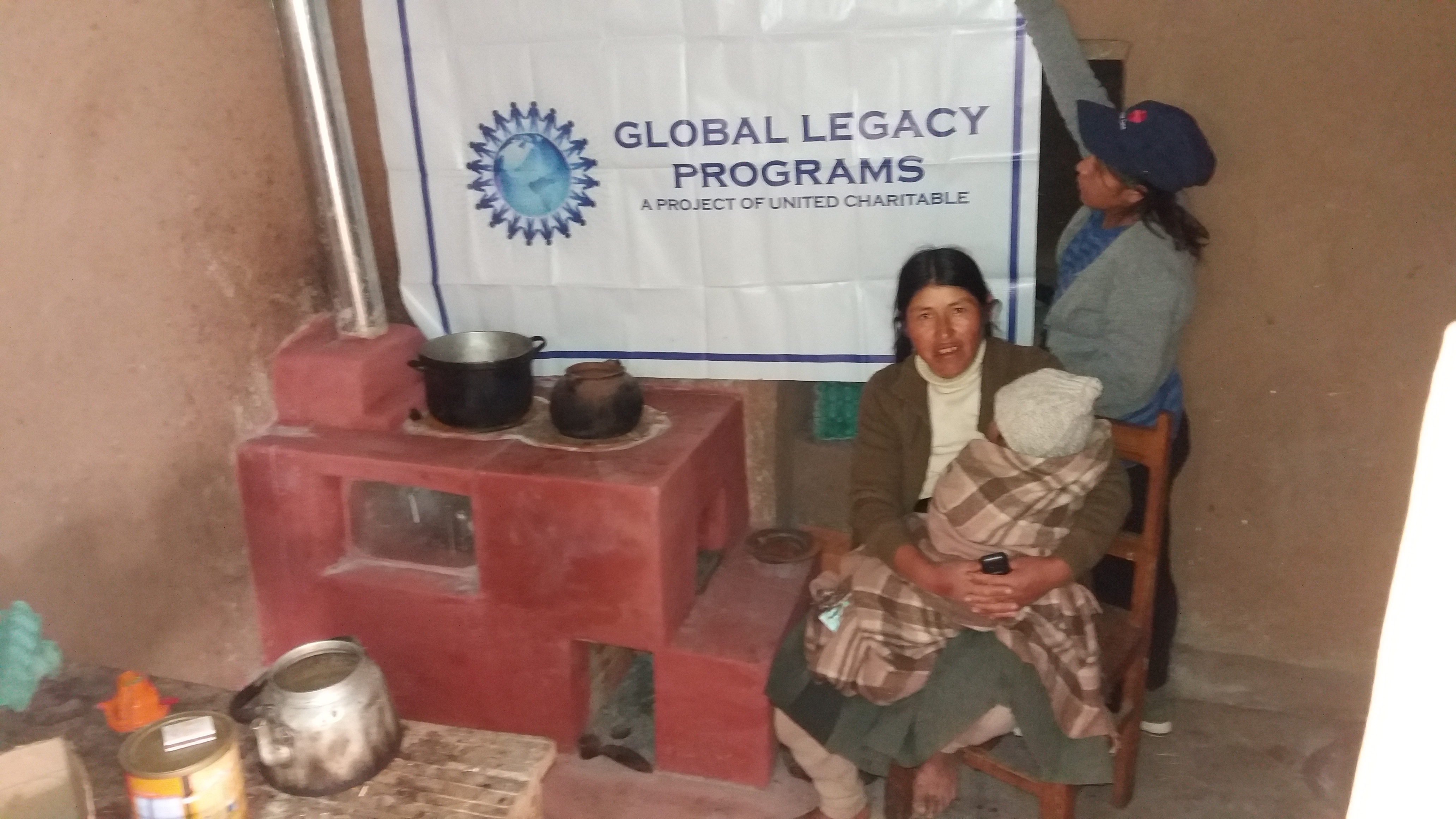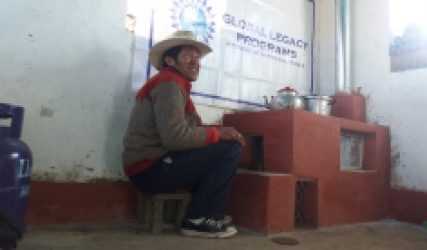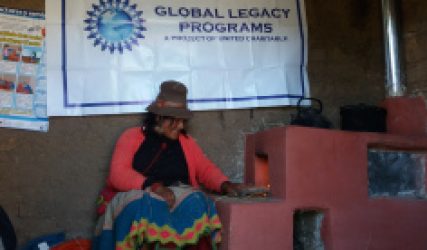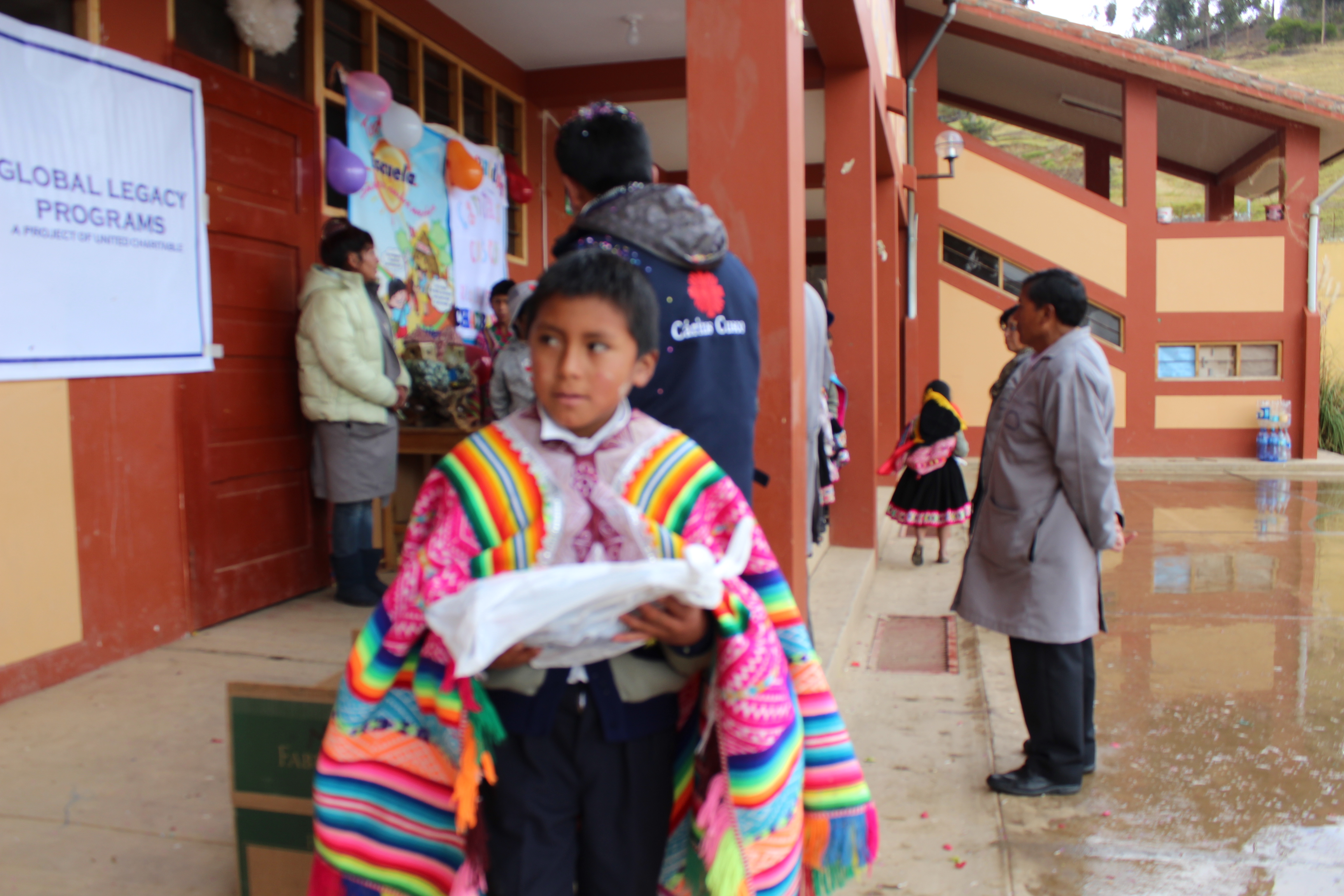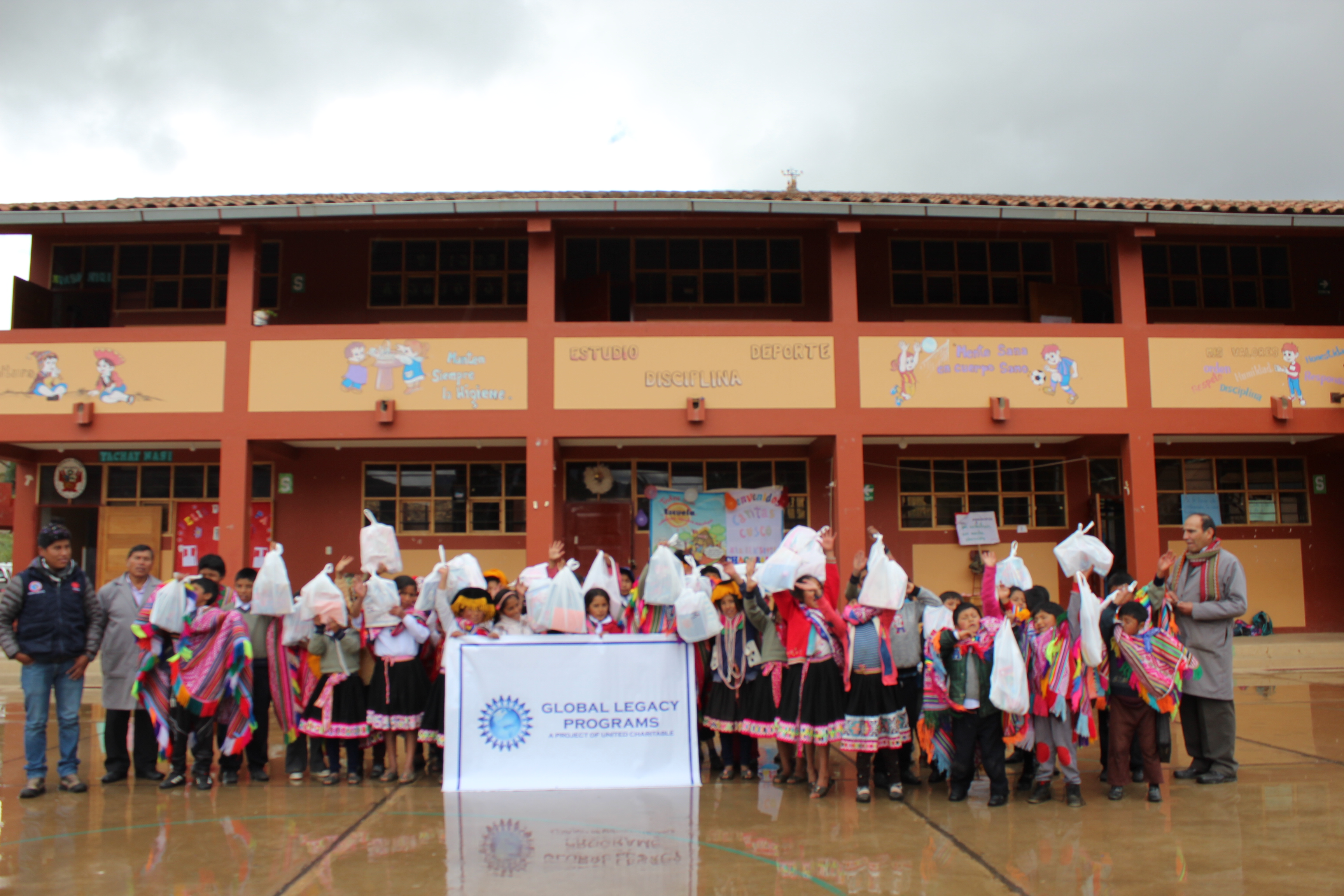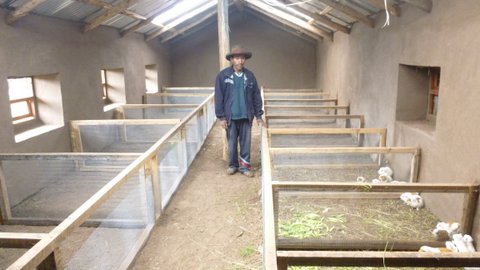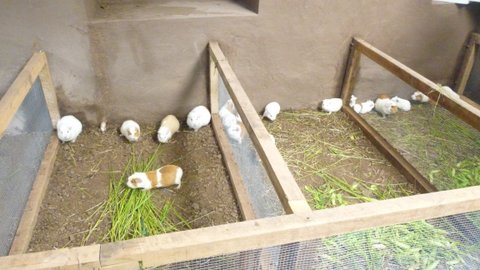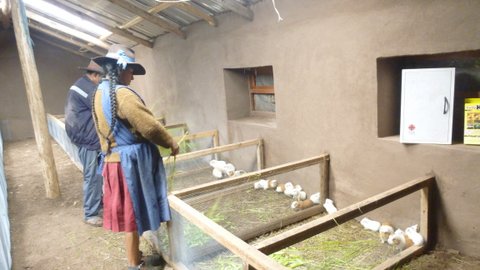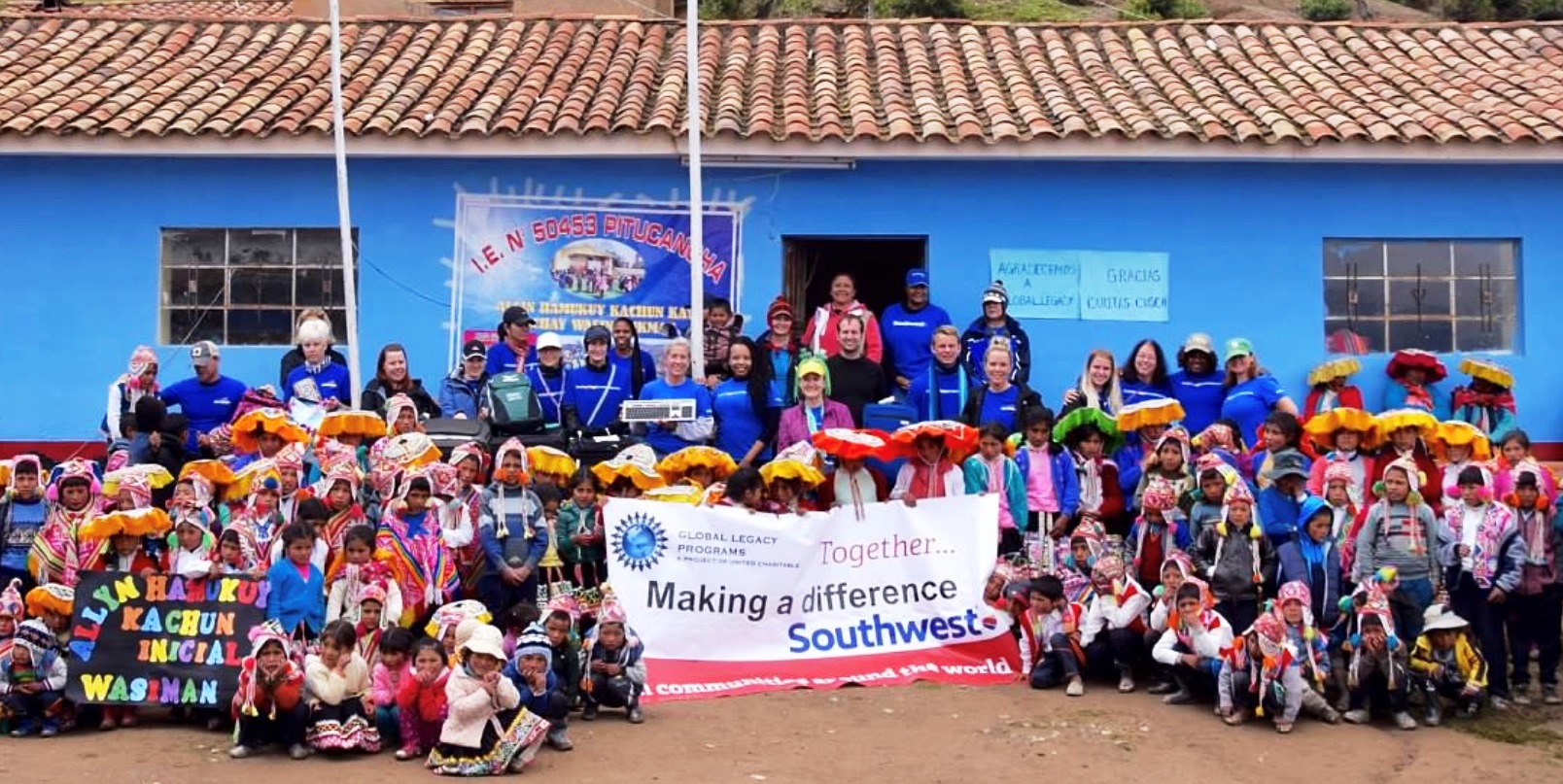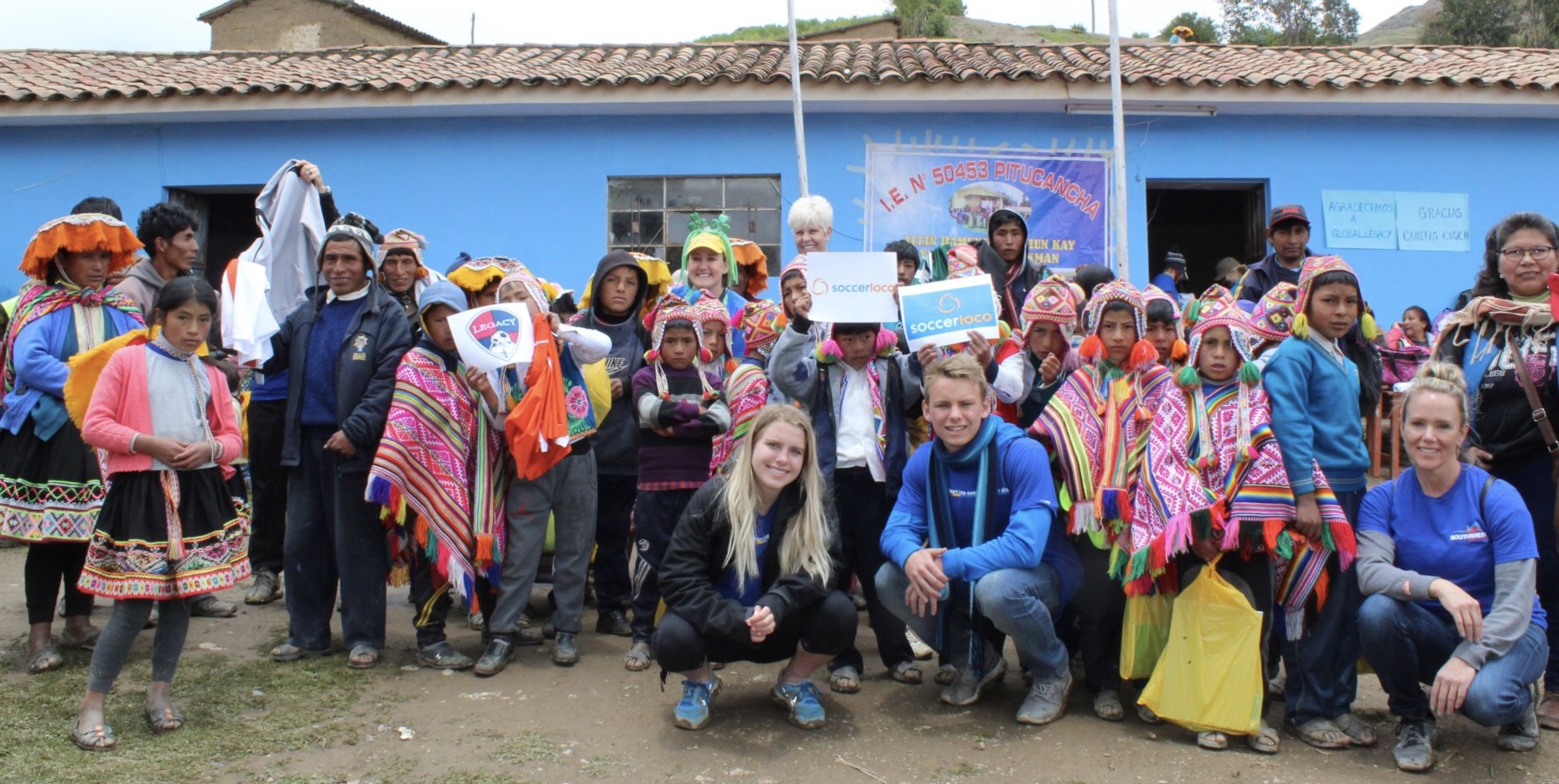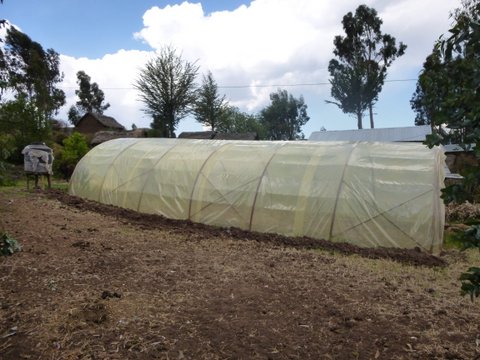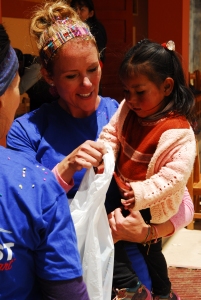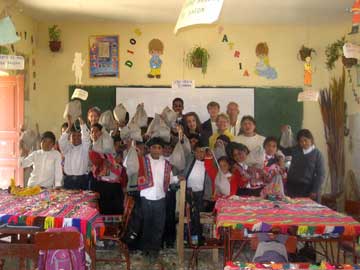SOUTHWEST AIRLINERS ON OUR SEPT. 2018 MISSION TO PERU
SWA employees once again joined an annual Peru solidarity trip organized by GLP. It was the 9th visit to various communities in the High Andes. Among them was Chacabamba where the group as annually funded school supplies for 165 children and added three microscopes for the new science lab. In Quehue they delivered medical supplies donated by Houston’s Medical Bridges and funded construction of 20 vented stoves.
TWENTY VENTED STOVES BUILT IN QUEHUE
A PROJECT SPONSORED BY EMPLOYEES OF SOUTHWEST AIRLINES GOING ON OUR SEPTEMBER MISSION TO PERU
These stoves replace the smoke producing floor fires causing widespread respiratory diseases among Quehue’s women and children. The stove is similar to the ones we build in Guatemala but is adapted to the High Andes different style of cooking.
No tortilla plate here but an oven and two burners. The stove consumes a very small amount of wood as compared to the floor fire, thus reducing deforestation and the work load of women and children who traditionally gather wood and carry it to the home for heat and cooking.
Help us provide forty three more families awaiting stoves in Quehue.
You can provide a stove for a family with a donation of $100.00.
ON A RAINY BUT CHEERFUL APRIL DAY, SCHOOL SUPPLIES WERE DISTRIBUTED TO THE STUDENTS OF CHACABAMBA’S PRIMARY SCHOOL
The supplies were an advance gift from the Southwest Airlines employees who will be visiting Chacabamba in September. We are fundraising to provide the secondary school with elements to equip a science lab.
JANUARY 2018 – COMPLETION OF GUINEA PIG BARN IN COYABAMBA
Built in the village of Coyabamba to provide a children’s hospice with meat to improve the children’s diet and something the hospice can barter for other needed nutrients.
Building greenhouses and guinea pig barns has proven to be a sustainable way to fight children malnutrition in Andean villages.
2017 ANNUAL GLP MISSION FOR SOUTHWEST AIRLINES EMPLOYEES
By Kim Rex
I Recently led my 8th annual mission to Chacabamba, Peru with the paticipation of my fellow Southwest Airlines employees. it was another WONDERFUL trip!
This annual mission to Peru began in 2009 with a goal to hike the Inca Trail to Machu Pichu and do some humanitarian work at a local village –That is how we went to Chacabamba, Peru, a small village, 11,000 ft up in the Andes and near Cusco. We were the first foreigners to ever visit that and other surrounding communities.
We bonded so well with the villagers that we all had tears in our eyes as they sprinked flowers and confetti on each of our heads while pleading that we return and not forget them.
We kept our promise and have returned each year with what the village elders told us was their maximum priority: providing EVERY child the required school and hygiene supplies so they can all be well prepared to attend school. We also funded and helped the villagers build vented stoves that have helped reduce respiratory disease and gifted each family with a warm blanket and other aid.
We improved the children’s school meal by building a greenhouse allowing the cultivation of vegetables impossible to otherwise grow due to altitude, climate and poor soil. We recently added a guinea pig barns – as that is the primary source of meat protein they have. The project has been extended to two other communities where greenhouses and guinea pig barns have also been built for the school kids.
There were 25 SWA Employee’s (family/friends) on this recent trip, and we all had our checked bags filled with donations: SWA winter coats, soap, shampoo, and games for the kids.
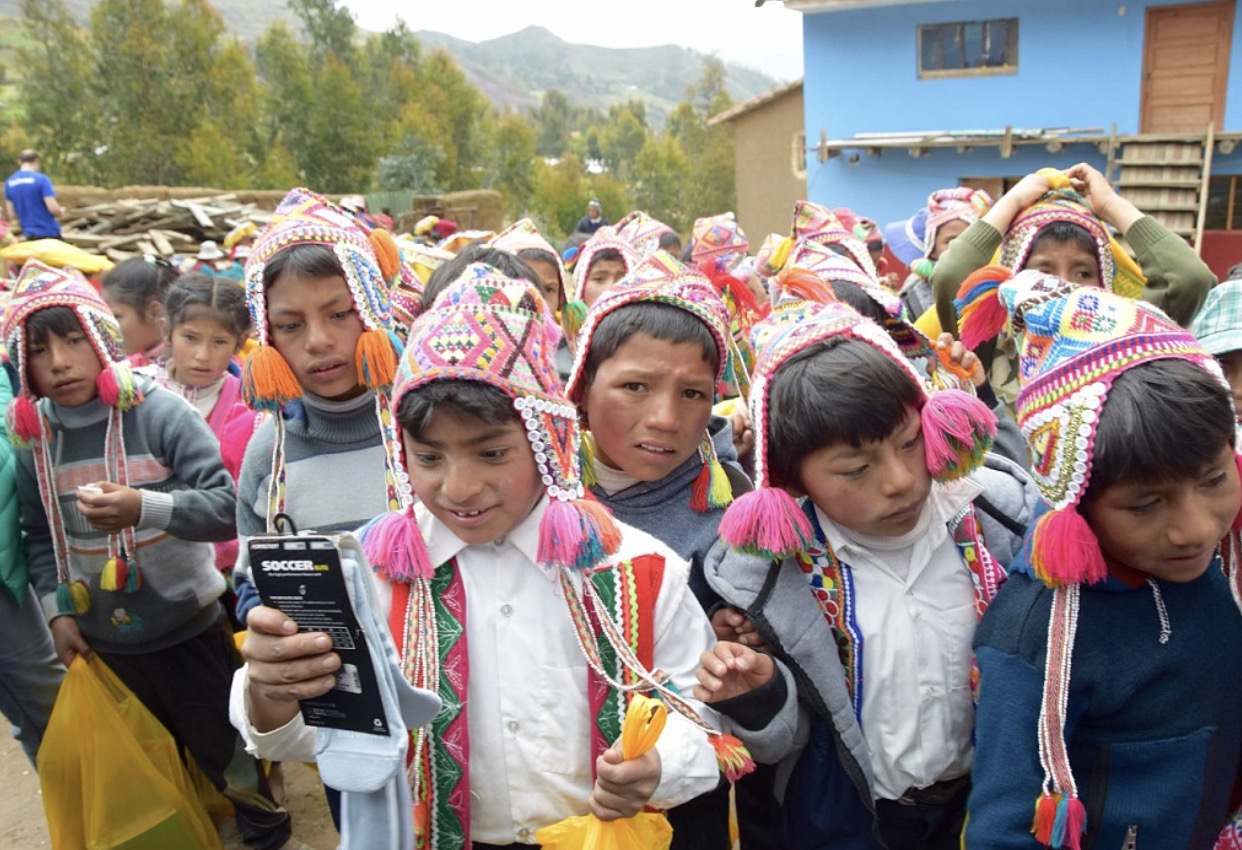
Chacabamba has a passion for soccer. We met with the coaches of the teams to deliver the items donated by a store in Arizona- ‘Soccer Loco’; they generously donated 26 shirts, 48 pairs of shorts, 18 sweatshirts, 50 pairs of socks, and 4 soccer balls! The village leader met with us, presenting a signed request to bring soccer uniforms on our next trip. The leader said they would name the field ‘Legacy’ in honor of the support from GLP and the Legacy soccer club in AZ (coincidentally, my kids play for a soccer club called ‘Legacy’).
The next trip to Chacabamba, Peru will be in the fall of 2018.
Please contact us at Travel@global-Legacy.org if you’re interested in going!
October 2015
Nineteen Southwest Airlines employees joined our annual mission to the High Andes. The group was led, once again, by Kim Rex who coordinated aid collection and fundraising projects prior to the mission. The latter including a raffle of two donated Southwest Airlines tickets earned through the tickets for Time program that rewards charities according to the number of hours Southwest Airlines employees have volunteered in support of that charity.
The result was construction of a large greenhouse in Coyabamba where altitude, weather condition and rough terrain do not permit much cultivation. Coyabamba is a very poor village where a priest struggles to provide meals to malnourished children. Father Rene is now growing a variety of vegetables in his greenhouse and providing his hungry little guests with nourishing meals.
In Quisicancha, adobe bricks were prepared in advance of our visit. In response to a request from the community, we arrived ready to build a guinea pig barn. Though these animals are considered pets in the USA and other countries, they represent the only source of meat protein in these Andean communities.
We returned to Chacabamba with a hundred pairs of tennis shoes that promptly found matching feet. The community leaders had asked for blankets as the temperature frequently drops to emergency level. We purchased 350 alpaca blankets in Cusco and distributed one to each family in Chacabamba and a nearby village we visited for the first time and certainly not for the last.
October 2014
Return to Chacabamba and Quisicancha
By Kim Rex, mission leader
The purpose of this mission was to fulfill our commitment to annually deliver school supplies to 345 children in the rural Andean communities of Chacabamba and Quisicancha. The volunteers brought with them a laptop computer downloaded with Rosetta stone that was donated to the computer lab at the Chacabamba learning center.
We traveled three hours up the Andes to reach Chacabamba where we were hosted in a dormitory set up in the school’s dining hall. We spent the afternoon working on the reforestation program and, in the evening, were visited by leaders of the community who welcomed us. The next day was a school day and the children had prepared a welcome ceremony during which they presented the volunteers with traditional dances, songs, and poetry. The school supplies and hygiene kits were delivered to the students after the ceremony and a laptop loaded with Rosetta Stone program was presented to the new computer lab at the learning center.
Divided in small groups, we spent the afternoon working with families doing whatever chores were needed (planting, harvesting,feeding animals).
The next morning, we traveled to Quisicancha where yet another wonderful welcome ceremony awaited them. School and hygiene kits were distributed to the children. A visit was made to the greenhouse built with our last year’s donation to provide better alimentation for the school kids. Everyone was happy to find it in top condition and flourishing with multiple vegetables. That was truly a great investment of our funds as the altitude and poor soil did not permit cultivating many of the vegetables the greenhouse now provides. A few hours were spent teaching the women how to make a special bracelet with material our team leader had brought. The idea was to have them make a bracelet we could sell and send them the money for. However, it was hard to make them understand that. They wanted to keep the bracelets. In the end an interpreter explained our intention and it was agreed that we would leave the remaining material for making bracelets Caritas could sell at their non profit store in Cuzco where other items such as weaving made by cooperative they support are selling well to tourists.
* Click here to view sample Peruvian trip itineraries *
** Peru Annual Trip Photo Slideshow **
Quisicancha, Peru :: April 2013 :: by Kim Rex
It was so great to see once again our Peruvian friends in Chacabamba and Quisicancha, Our annual mission provided school supplies and hygiene kits to 300 students. Four complete computers were also delivered for the purpose of creating an after school class at the local learning center operated by Caritas Cusco. This was our 5th annual visit to these villages. Thirteen Southwest Airlines Employees and family members made this trip possible. We had so much fun spending time with these communities, working together to continue building our relationship and provide much needed aid. It is amazing how these humanitarian trip allow you to work side by side with the community! We were given the opportunity to help plow the field, by hand, for papas. We also purchased the needed to paint for their school building project, and painted the ceramic face decorations which represent good health and prosperity.
July 4, 2012by Mireille Hanna |
|
|
|
|
|
|
|
To view additional information about our trips to Peru, click on the links above to read sample itineries and view pictures of our 2011 visit. Better yet, come join our next visit to Chacabamba or to one of our other projects.Mireille Hanna and the GLP All-Volunteer Team |
==========
January 2012 Message
Skin graft surgery saved Frida Aquino’s arm before severe burn injury resulted in infection and amputation. She is now undergoing therapy and on her way to full recovery. The adolescent girl was injured in a bus accident. The small compensation she received from the bus company barely sufficed for the initial care she received upon arrival at the hospital. Your donations made It possible for us to respond to an appeal from Caritas Cusco to save Frida’s arm.
The 24 participants in our March 2012 mission to Peru will be delivering hygiene and complete school supplies to 450 children in 3 isolated Andean villages. The secondary school of Chacabamba will receive four more computers and books to start a new library. Funds for the books were donated by the students at Wichita’s East High.
How you can help:
:: Contact us if you can organize a collection of Spanish books.
:: Click here to donate any amount towards the purchase of a book.
:: Click here to donate $10.00 for a hygiene kit.
:: Click here to donate $20.00 for a school kit.
==========
July 2011 Message
LIMA
Rina Paricahua and Noemi Alendez completed their pastry course and, because they are eighteen, have now left Villa Martha orphanage. They are living with relatives and have jobs as pastry chefs. Thank you Gail Kurtz and Janet Dexter for raising the funds needed for the girl’s pastry courses by hosting a dinner party and auction at Gail’s home in Berkeley, last year. Villa Martha Orphanage in Lima, is an extremely well run institution that prides itself in providing a skill that the children can use to survive once they have reached the age of eighteen and must leave the safety of its walls. Courses in sewing, shoe making, carpentry and baking are offered on the premises. Sponsorships are sought for talented children interested in a variety of specialized courses not offered at Villa Martha. Please contact us if you are interested in sponsoring such studies.
Our work in Peru now extends to the Andean villages of Chacabamba and Quicancha. A report on those projects now follows.
******
CHACABAMBA AND QUISICANCHA By Mireille Hanna


